Green travel by land, air and sea

Wander through any Dutch city, and you’ll be amazed by the locals’ all-weather commitment to zipping around for the daily commute on a bike…. often with an umbrella in one hand, and two toddlers and a dog playing in a cart at the front. But it’s not just pedal-power that is fueling our sustainable mobility ambitions.
The world is moving again. And in the TopDutch region, we’re moving the world forward when it comes to sustainable and innovative forms of transport. As the Energy Transition Capital of Europe, the Northern Netherlands has an ecosystem of expertise, knowledge institutions and pioneering entrepreneurs whom are determined to produce new energy applications across value chains. For example in mobility. And with our unique mix of environment - dynamic cities surrounded by rural landscapes, an airport, and seaports – the TopDutch region is the ideal field lab to explore, test and implement mobility solutions that can help the world move forward: By air, land or sea.
BY AIR
Hydrogen Airport
The excitement one feels when they step into the TopDutch airport Groningen Airport Eelde is more than just that pre-vacation anticipation. The airport is also an awe-inspiring test ground for the future of sustainable air travel. With the NXT Airport initiative, Groningen Airport Eelde wants to become the most sustainable airport in Europe. Together with educational institutions, the business community and government work on sustainability innovations within projects. The focus is primarily on hydrogen technology. The airport's ambition is to produce green hydrogen on the airport site and to be able to use it for innovative applications on both land and air sides.
This ambition got a significant boost recently, when the WAviatER project - ‘Hydrogen production technology for the Aviation sector and Energy applications at a Regional level’- got a 3.5 million euro funding injection. As part of this project, a TopDutch consortium – industry pioneers Douna Machinery Leeuwarden, JB Besturingstechniek, REDstack and Demcon, as well as Groningen Airport Elde, the New Energy Coalition and the University of Groningen – will be developing new hydrogen technology. The first concrete application will be an electrolyzer at Groningen airport Eelde, which will produce green hydrogen as an emission-free energy carrier for light airplanes, drones and ground material.
Sustainable in more ways than one
‘Green’ hydrogen is produced in an electrolyzer, which uses green electricity to split water up into hydrogen and oxygen. To date, this producing hydrogen in this manner, on a small-scale, is not yet competitive with the large-scale, natural gas-based production of ‘gray’ hydrogen. For decentralized applications, however, there is a need for small to medium-sized electrolyzers that produce green hydrogen at affordable costs. And then there’s the electrolyzers themselves. Some of the existing electrolyzers on the market are made of or dependent on the use of scarce and valuable metals. With this in mind, the WAvitER consortium are going to design a scaleable and sustainable electrolyzer for the airport: It must be cheaper, more efficient and sustainably-sourced. Furthermore, the team want the electrolyzer to be able to be manufactured using automated serial production.
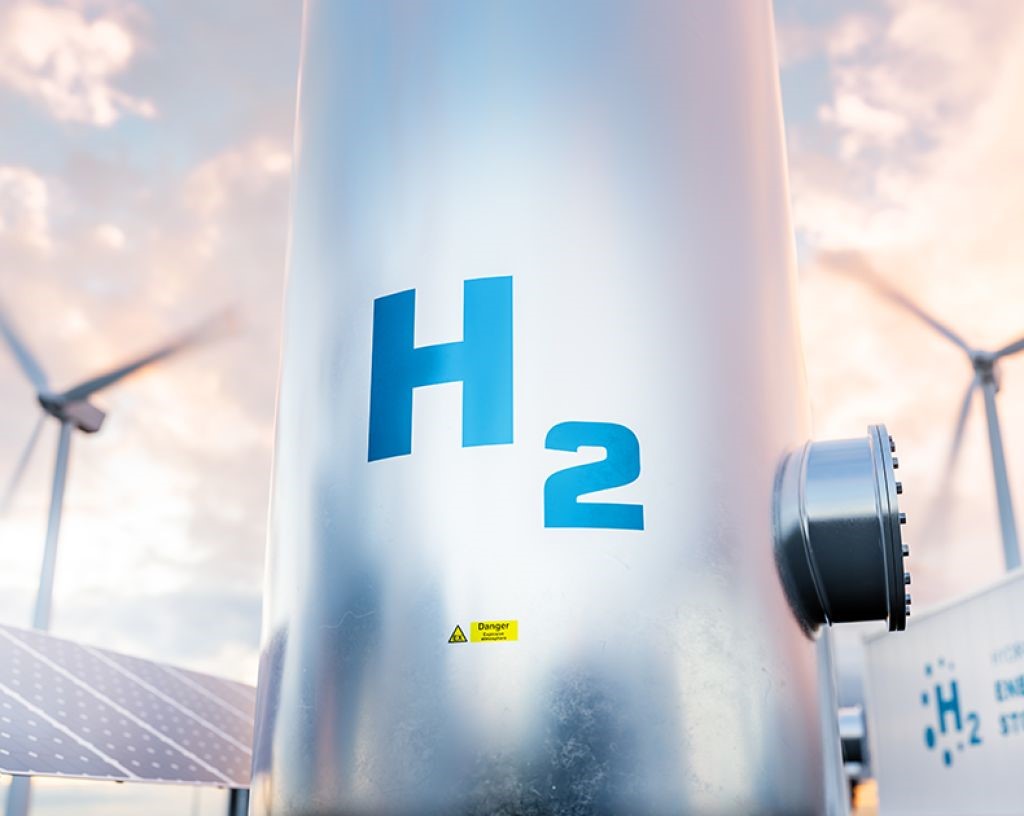
That’s no mean feat, it will take the collaborative mindset the TopDutch region is well-known for in order to have the installation by their deadline of October 2023. “Our goal is to produce a comprehensive system for the production, distribution and use of hydrogen,” says Jonas van Dorp, Head Aviation Marketing & Development at Groningen Airport Eelde. “This way we will have a nearby green hydrogen production facility, and together with the expansion of the currently 22MW solar park, we will increasingly develop the airport into an energy hub of regional significance.”
Big ambitions
This green hydrogen can then be applied in many ways – on land and in the air. On landside, for example, passenger cars, trucks and regional buses can fill up with the home-grown hydrogen. On the airside, ground handling equipment, hydrogen drones and even hydrogen-powered aircraft will be served in the future.
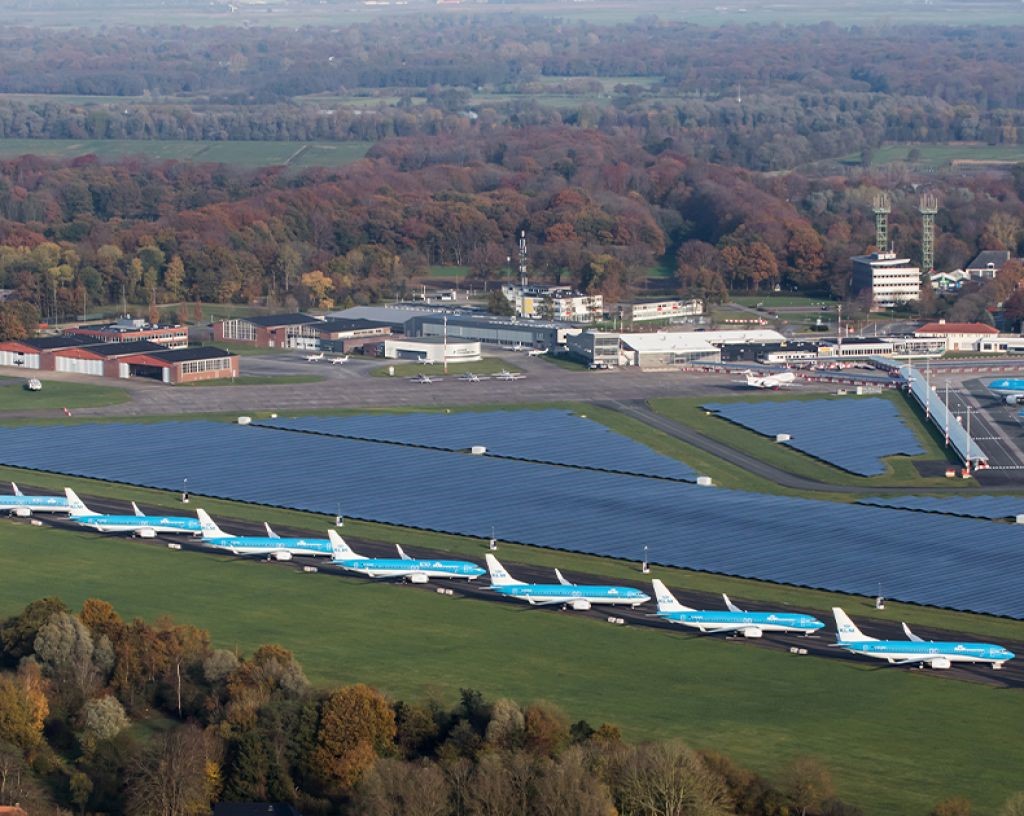
Hopping on a hydrogen-powered flight is still a little way off – Airbus predict it will become a reality by around 2030 or 2040. However, TopDutch locals will still soon be able to jet-off to cities such as London, Berlin or Brussels on zero-emission flights. In 2026, Groningen Airport Eelde will become the first operational airport that ELECTRON aviation will use as a base for their electric air cabs. These air cabs will be able to take one to four passengers up to 750km away completely emission-free. The ambitions of the airport make them a perfect starting-point for this, because the existence of their large solar park means that ELECTRON can ensure the electricity they fuel their air cabs with is 100% green energy.
And who knows what other technologies for the aviation sector might arrive in the future? But we do know that current TopDutch students will help make that future. The airport has their own campus, where further education institutes from the region are able to work in multidisciplinary environments and alongside business partners on various research projects, trainings and practical assignments.
BY LAND
Global EV market leaders
For over a decade, the Netherlands has been heavily investing in the roll out of electric vehicles. Having committed to a 2030 deadline after which all new passenger vehicles sold must be zero-emission – 5 years earlier than the UK and 10 years earlier than Canada -, the government are aggressively promoting EV ownership. Dutch drivers are supported in opting for a more sustainable vehicle via a wide-reaching bundle of policies including fiscal incentives and infrastructure developments. Our relatively small country is tightly packed with a network of 75,000 charging stations – almost a third of the EU’s total – a figure which is expected to grow to 1.8 million in the next decade.
As a result of this stance, the Netherlands is now the global market leader for electric vehicles, according to the Arcadis Global Electric Vehicle Catalyst Index 2021. We topped the EV Catalyst Index in terms of market maturity, characterized by the affordability and quality of electric vehicles (of which there are 183 different models on the Dutch market) as well as the ramping-up of production capabilities. In particular, Arcadis found the 25% market share of BEVs and PHEVs in the Netherlands “remarkable”, naming us as “one of the most progressive countries when it comes to EVs”.
The Netherlands is one of the most progressive countries when it comes to EVs.
Arcadis Global Electric Vehicle Catalyst Index 2021
Taking it further with TopDutch
Despite being confirmed as the global market leader for the trade of EVs, in the TopDutch region we’re not resting on our laurels. Here, visionary entrepreneurs, academics and civil servants are on a mission not just to grow and develop the EV market locally, but also to transform the whole field of sustainable mobility. This visionary thinking is manifested through triple-helix projects collaborating for new technological developments, creative market reforms, and the production of innovative new zero-emission vehicles.
The Northern Netherlands set a 2035 target to bring all of its mobility – including heavier duty vehicles – to zero emission, and all infrastructure to a minimum of energy-neutral. To that end, a network of governmental, business and educational and non-profit partners initiated the innovation center hive.mobility, where a cross-section of TopDutch society comes together to build smart and sustainable mobility solutions. Projects coming out of this hub include electrifying advancements for zero-emission public transport by increasing the capacity for electric busses, as well as a number of hydrogen projects such as a pilot hydrogen-fueled train, hydrogen-fueled busses and building a network of hydrogen filling stations.
In addition, the provinces of Groningen and Drenthe have launched their own drive to roll out 1,000 public EV-charging stations across the region. “The way we’re doing this is unique in the world,” said Iris Kolkman, a project manager with the Province of Groningen.
Normally an EV-charging station gets electricity from only one supplier. But Groningen and Drenthe wanted to do things differently. “We wanted to break the monopoly of the big energy companies,” Kolkman explained. “We wanted all electricity suppliers to have a chance to supply electricity on our charging stations. In particular we wanted our local suppliers - renewable energy cooperatives which produce wind and solar power in the region - to be able to supply power to the EVs that we have driving around here.”
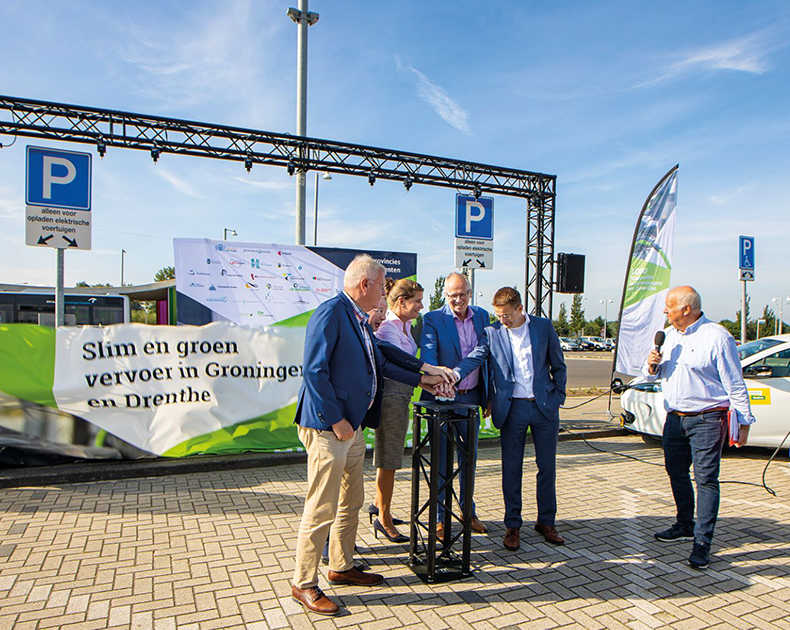
To make this possible, Groningen and Drenthe introduced a unique concept: all of the public EV charging stations in the two provinces will allow any energy supplier to deliver power to the EV network. Normally an EV-charging station gets electricity from only one supplier. But Groningen and Drenthe wanted to do things differently. “We wanted to break the monopoly of the big energy companies,” Kolkman explained. “We wanted all electricity suppliers to have a chance to supply electricity on our charging stations. In particular we wanted our local suppliers - renewable energy cooperatives which produce wind and solar power in the region - to be able to supply power to the EVs that we have driving around here.” To make this possible, Groningen and Drenthe introduced a unique concept: all of the public EV charging stations in the two provinces will allow any energy supplier to deliver power to the EV network.
The rollout of the EV charging stations in the TopDutch region also has other unique features. The locations where the stations will be built will not be decided top-down by the provinces, but on the basis of local demand. If a resident would like to have an EV station near his or her home, they can ask the province, and if the house has no driveway and there are no other charging stations nearby (or if nearby stations are already used intensively), the station will be built within 250 meters of the house. In addition, the provinces have identified a number of ‘strategic spots’ where they expect a lot of demand. “We want to make sure that every village in our provinces has at least one public charging station. So, all visitors to the Northern Netherlands can be sure there will always be a public charging station nearby,” said Kolkman.
We wanted to break the monopoly of the big energy companies.
Iris Kolkman, a project manager at Province of Groningen
Sizzling new start-ups
The passionate environment of the TopDutch new energy ecosystem has been fertile ground for a number of EV-related start-ups. Take for example Frisian ‘Charging as a Service’ hardware firm EVoltify. Founded only in 2018, the start-up aims to take away the ‘range anxiety’ motorists sometimes feel when driving electric vehicles. Do I have enough charge to make all my meetings? What if there’s no spare charging stations near my parking spot? EVoltify wants to put an end to these concerns by bringing the charging station to the car instead of the other way around.
EVoltify drivers will be hooked up with an app, with which they can pass on the information of where they’re parked and roughly how many kilowatt-hours of charge they’ll need. Then they’ll be able to get on with their plans, and EVoltify will get a mobile charging station to their car. The technology was developed in the TopDutch region, in partnership with hive.mobility where students from the University of Groningen and Hanze University of Applied Sciences provided input on the product design and business viability. Currently in the pilot phase, EVoltify are currently testing how the product can revolutionize charging infrastructure on a large-scale.
And it’s not just the infrastructure for electric vehicles that we’re re-thinking. We’re even producing our own innovative new electric vehicle. Carver, headquartered in the TopDutch city of Leeuwarden, have got a vision to change the boring, fume-filled morning commute. Their unusual automobile is helping drivers make faster, smarter, and more sustainable journeys in a compact masterpiece of engineering.
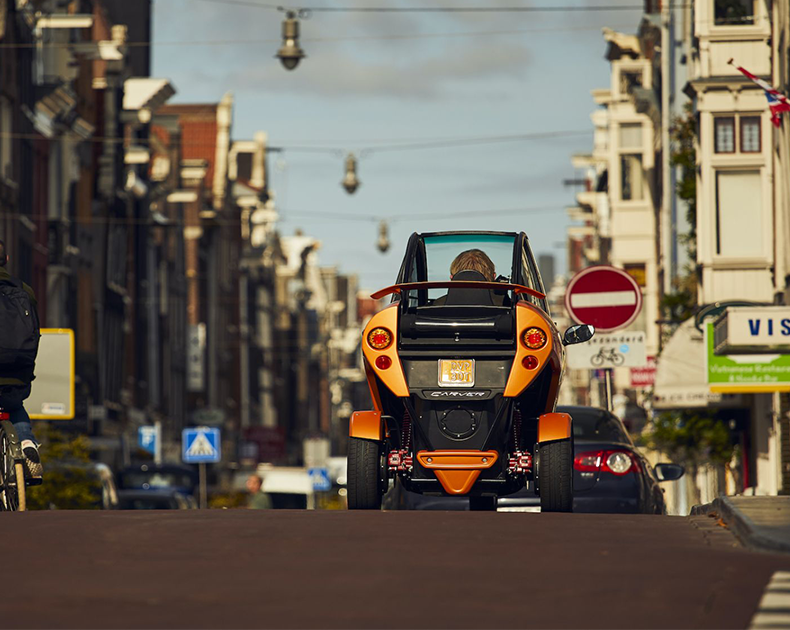
Carver’s journey goes back all the way to the early nineties, when founder Anton van der Brink questioned why city dwellers on their commute have to drive big family cars through rush hour, when they’re usually taking the journey alone. To provide an alternative, Carver was set up to produce a one-person smart vehicle that unites the benefits of a motorcycle and a car. The Carver was born to rave reviews: The likes of Top Gear, Jenson Button and the Gadget Show all experienced the fun of the Carver. But back in the early 2000s it was still more of a cult classic, and only 250 collectors’ vehicles were produced.
Now, times have changed, and so has the Carver. In 2017, the first prototype of the new, 100% electric, Carver was built, and pre-sales began early the next year. That was when Carver, originally from the center of the country, chose TopDutch as the new location for their headquarters and manufacturing site. TopDutch is well known for its expertise in logistics and smart manufacturing, as well as a heavy focus on sustainable technology. Now in 2022, Carver have expanded their range to include a cargo model, which can be used to make efficient, emission-free last-mile deliveries around cities.
BY SEA
Super sustainable ships
Located on the logistically-important Wadden Sea coastline, the waterways are also a special part of the TopDutch infrastructural landscape. And just as on land and in the air, we are committed to making maritime more environmentally sustainable. The Green Shipping Waddenzee program is a 25 million euro innovation project where businesses, government and knowledge institutions are collaborating to accelerate CO2-neutral and fossil-free technology applications in the shipping industry
Launched in 2020, one of the most iconic projects coming out of the program is the conversion of the Ecolution ship to be powered by hydrogen. The boat was originally built back between 2007 and 2010, on request of the now late-astronaut Wubbo Ockles, the first Dutchman in space and alumni of the TopDutch University of Groningen. He ordered the sailboat to be as sustainable as possible, and was designed to be both luxurious and be built by materials using as few fossil fuels as possible. The ship was floated around the world as an inspiration for sustainably-minded sailors. After Ockles’ passing, the Ecolution was placed by the Sustainability Center in the green-shipping port of Lauwersoog in the TopDutch region.
The Ecolution was already revered for its sustainability, however it’s now being pushed even further. The TopDutch region are determined to become the Hydrogen Capital of Europe. As part of the region’s transition, where hydrogen innovation are being accelerated throughout the value chain, the Ecolution was chosen to lead the maritime transition to hydrogen. “We’ve had a coal era, a diesel era and this is the start of the hydrogen era” Albert Keizer, Director of Next Generation Shipyards told RTVNoord. Now, the beautiful ship is propelled by two electric motors, which is powered by fuel cells. Within those fuel cells hydrogen is drawn from two large tanks on deck and mixed with oxygen to produce electricity and water. And it goes even further: Besides the boat itself, also all the other electric equipment on the ship – even the coffee machine – is powered by hydrogen.
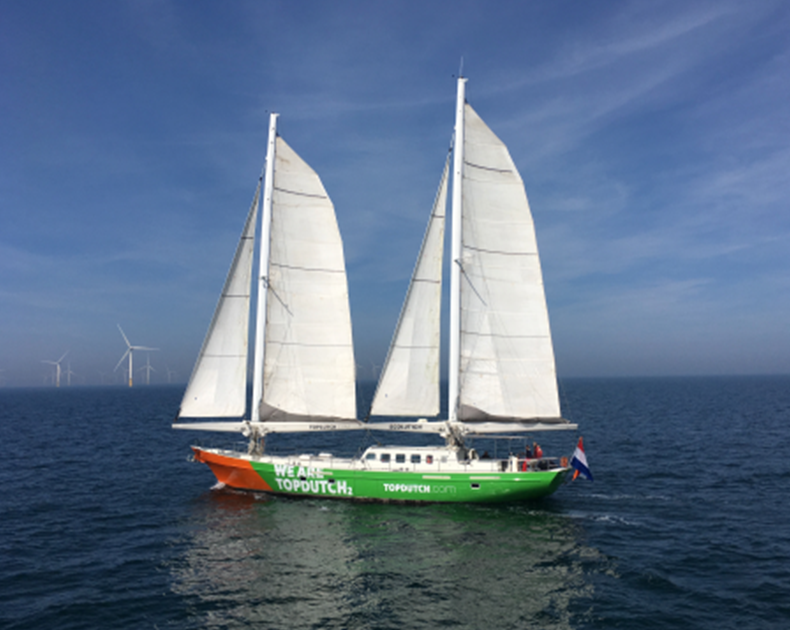
n May 2021, the first test-run of the hydrogen-powered Ecolution took place. And it was enormously successful. Now the ship has become a flagship for the TopDutch green hydrogen industry. The practical knowledge, networks and technical innovations are now to be touted as an inspiration for the maritime in the region and abroad. In TopDutch, the ambition is to have all ships sail fossil-free from the Port of Lauwersoog by 2030. All aboard!
